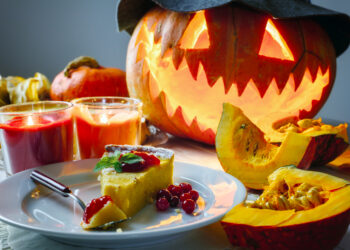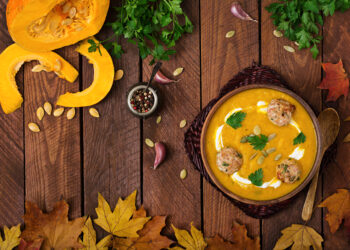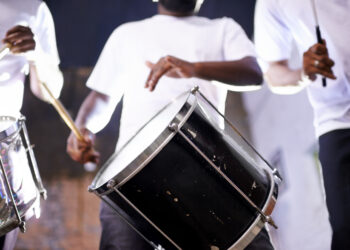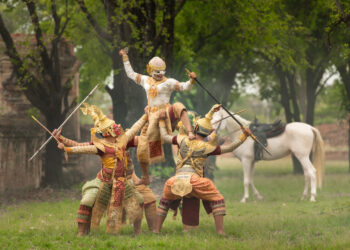Maha Shivratri holds immense significance in Hindu culture as it symbolizes the marriage between Lord Shiva and Goddess Parvati. It is believed that observing Maha Shivratri with sincerity and devotion can help devotees overcome ignorance and attain spiritual enlightenment. The festival also serves as a reminder of the cyclical nature of life—death followed by rebirth—and emphasizes the importance of letting go of attachments to achieve liberation (moksha).
Historical Background
Origins of Maha Shivratri
Maha Shivratri, also known as “The Great Night of Lord Shiva,” holds a significant place in Hindu culture and mythology. The origins of this auspicious festival can be traced back to various Hindu scriptures and legends. One popular belief is that Maha Shivratri marks the day when Lord Shiva performed the divine dance of creation, preservation, and destruction.
Another interpretation suggests that it is the night when Lord Shiva got married to Goddess Parvati. The exact origins may vary across different regions and traditions within Hinduism, but the essence remains consistent – a celebration of Lord Shiva’s divine energy and his role as the supreme deity.
Legends associated with the festival
Numerous fascinating legends are intertwined with the celebration of Maha Shivratri, adding layers of depth and meaning to this sacred occasion. One such legend narrates the story of how Lord Shiva saved the universe by consuming poison during the churning of the ocean (Samudra Manthan). As a result, he turned blue-throated, earning him the title “Neelkanth,” which means blue-throated in Sanskrit.
This act symbolizes his benevolence and willingness to take on immense burdens for the well-being of all creation. Another popular legend tells the tale of how Lord Shiva manifested himself as a Linga (an abstract representation) on Maha Shivratri, signifying his formless and omnipresent nature.
These captivating stories not only entertain but also impart profound spiritual teachings about sacrifice, devotion, and transcendence. Incorporate these elements into your writing to create a rich narrative about Maha Shivratri’s historical background and its associated legends.
Fasting and its importance on Maha Shivratri
Fasting holds a significant place in the observance of Maha Shivratri. Devotees abstain from consuming food and water throughout the day, symbolizing self-restraint, purification, and devotion to Lord Shiva. The fast is believed to cleanse the body and mind, allowing individuals to focus solely on spiritual activities.
It is a way for devotees to demonstrate their dedication and seek blessings for a prosperous life. Some people opt for a strict fast without consuming even a drop of water, while others choose to have fruits or milk during this period.
Offering prayers to Lord Shiva
Offering prayers to Lord Shiva on Maha Shivratri is an integral part of the celebrations. Devotees visit temples dedicated to Lord Shiva or set up temporary altars at home adorned with flowers, incense, and lamps. They chant sacred mantras such as “Om Namah Shivaya” and recite hymns praising the qualities of Lord Shiva.
The prayers are offered with deep reverence and devotion, seeking his blessings for prosperity, peace, and spiritual enlightenment. The act of prayer on this auspicious day is believed to create a strong spiritual connection with Lord Shiva.
Abhishekam (ritual bathing) of Shiva Linga

One of the most revered rituals performed on Maha Shivratri is the Abhishekam of the Shiva Linga. This ritual involves bathing the symbolic representation of Lord Shiva with various sacred substances such as milk, honey, yogurt, ghee (clarified butter), sandalwood paste, and holy water from rivers like Ganga. Each substance used in Abhishekam carries symbolic meanings related to purity, prosperity, and divine grace.
The rhythmic pouring of these offerings over the Linga accompanied by chanting mantras creates a serene ambiance filled with spirituality and devotion. Devotees believe that participating in this ritual brings about inner purification and invokes blessings from Lord Shiva for happiness and fulfillment in life.
Symbolism and Mythology
Significance of Lord Shiva in Hindu Mythology
Lord Shiva, one of the principal deities in Hinduism, holds immense significance in the Hindu mythology. Often portrayed as the destroyer within the Trimurti (trinity) along with Brahma, the creator, and Vishnu, the preserver, Shiva embodies various paradoxical qualities. He is both a fierce warrior who vanquishes evil forces and a compassionate deity who grants boons to his devotees.
Lord Shiva is often associated with asceticism, meditation, and spiritual enlightenment. His depiction with matted hair adorned with a crescent moon symbolizes control over time; while his third eye represents wisdom and insight beyond ordinary perception.
The Cosmic Dance of Lord Shiva – Tandava
The cosmic dance of Lord Shiva, known as Tandava, is a mesmerizing and powerful portrayal of creation and destruction. It symbolizes the rhythmic cycle of birth and death in the universe. Tandava is said to be performed by Lord Shiva when he performs his Ananda Tandava (the Dance of Bliss) or Rudra Tandava (the Dance of Anger).
In Ananda Tandava, Shiva’s dance embodies beauty, grace, and creativity that sustains life. Conversely, Rudra Tandava signifies destruction and dissolution to pave the way for new creation.
The iconography associated with Tandava often shows Shiva dancing on a demon or dwarf symbolizing ignorance overcome by divine knowledge. Incorporating these aspects into Maha Shivratri celebrations deepens devotees’ understanding of Lord Shiva’s role in Hindu mythology while enhancing their spiritual connection with the divine energy he represents.
Celebrations Around the World
How Maha Shivratri is Celebrated in India
In India, Maha Shivratri is celebrated with great fervor and devotion. The day typically starts with devotees waking up early, taking a ritual bath, and visiting Lord Shiva temples. They offer prayers, flowers, bel leaves, and milk to the Shiva Lingam as a form of reverence.
Fasting is a common practice on this day, with many devotees abstaining from food and consuming only water or fruits. The evening is marked by special rituals such as Rudrabhishekam and Maha Aarti performed in temples, accompanied by melodious bhajans dedicated to Lord Shiva.
Unique Customs in Different Regions
Across various regions of India, Maha Shivratri is celebrated in distinct ways that reflect the cultural diversity of the country. In states like Maharashtra and Gujarat, grand processions known as ‘Shobha Yatras’ are organized where people carry idols of Lord Shiva adorned with flowers and incense. In Himachal Pradesh, devotees brave the cold weather to visit ancient temples like Baijnath Temple to seek blessings.
In Tamil Nadu, special Kolams (rangoli) depicting Lord Shiva are drawn outside homes as a form of artistic expression. Each region adds its unique touch to the celebration while upholding the essence of devotion towards Lord Shiva.
The Power of Vigilance: Staying Awake on Maha Shivratri
The tradition of staying awake all night on Maha Shivratri holds profound spiritual significance in Hindu culture. It is believed that by remaining vigilant and engaged in prayer and meditation throughout the night, devotees can enhance their spiritual awareness and connect more deeply with Lord Shiva.
This practice symbolizes a state of heightened consciousness and devotion, showing dedication to the deity and a willingness to transcend worldly distractions. Staying awake is seen as a way to cleanse the mind, body, and soul, allowing for a more profound experience of divine presence.
Meditation Magic: Benefits of Meditating on Maha Shivratri
Meditation on the auspicious night of Maha Shivratri is believed to bring about numerous benefits for practitioners. By focusing inwardly on this sacred occasion, individuals can experience heightened clarity, peace, and spiritual growth. The tranquil ambiance of the night creates an ideal environment for introspection and self-discovery.
Meditating during this time allows one to access deeper layers of consciousness, leading to insights, revelations, and inner healing. It is said that meditating on Maha Shivratri can help purify negative energies, elevate consciousness levels, and bring about a sense of harmony between mind, body, and spirit.
Food and Festivities

Delightful Delicacies for Devotion: Typical foods prepared during Maha Shivratri
During Maha Shivratri, a variety of vegetarian dishes are prepared as offerings to Lord Shiva. One of the most popular ingredients used is Sabudana (tapioca pearls), which holds great significance during fasting periods. Sabudana khichdi, a savory dish made with soaked sabudana, peanuts, and spices, is a common favorite.
Another traditional dish enjoyed during this festival is Thandai, a flavorful milk-based drink infused with nuts, saffron, and aromatic spices like cardamom and fennel seeds. Fruits like bananas and coconut are also commonly offered to Lord Shiva as they are considered pure and auspicious.
Gathering in Grace: Community gatherings and cultural programs during the festival
Maha Shivratri brings communities together in celebration and devotion. Temples organize special events such as bhajans (devotional songs), discourses on the significance of the festival, and performances of traditional dance forms like Bharatanatyam or Kathak that depict stories related to Lord Shiva.
Many devotees participate in all-night vigils at temples or homes where they chant prayers and hymns dedicated to Lord Shiva. Community feasts are also organized where people come together to share meals prepared without onion, garlic, or non-vegetarian ingredients as part of their observance of purity during this auspicious time.
Modern-Day Observance
How contemporary society celebrates Maha Shivratri
In modern times, the observance of Maha Shivratri has evolved to incorporate a blend of traditional customs and modern practices. Across India and in Hindu communities worldwide, the festival is celebrated with great fervor and enthusiasm. People observe fasts, visit temples dedicated to Lord Shiva, and participate in night-long prayers and bhajans.
Many devotees engage in charitable activities such as donating food or clothing to the less fortunate as a way of seeking blessings from Lord Shiva on this auspicious day. In urban areas, special cultural events, concerts, and dance performances are organized to commemorate the occasion.
Impact of technology on traditional observances
Technology has undoubtedly influenced the way Maha Shivratri is observed in contemporary society. With the advent of social media platforms and live streaming services, devotees can now participate in virtual darshans (sacred viewing) of temples from anywhere in the world. Many temples livestream their rituals and ceremonies during Maha Shivratri, allowing a global audience to be part of the festivities.
Additionally, mobile apps and websites offer information on rituals, prayers, and significance related to Maha Shivratri, making it more accessible to younger generations who may not be familiar with all traditional practices. While technology has brought convenience and connectivity to the celebration of this sacred festival, it also raises questions about maintaining authenticity and sanctity amidst a rapidly changing digital landscape.
Eco-friendly Ways to Celebrate Maha Shivratri
As we celebrate the auspicious occasion of Maha Shivratri, it is crucial to adopt eco-friendly practices that honor the sanctity of nature and the environment. One meaningful way to do so is by using biodegradable materials for decorations and offerings.
Instead of plastic or non-biodegradable items, opt for natural materials like flowers, leaves, and clay lamps. These eco-friendly choices not only reduce waste but also contribute to a more sustainable celebration.
Importance of Preserving Natural Resources During the Festival
Maha Shivratri is a time of reverence and devotion towards Lord Shiva, who is often associated with the elements of nature. It is imperative that we show our respect for Mother Earth by conserving natural resources during the festival.
This can be achieved by minimizing water usage during rituals such as Abhishekam (ritual bathing) and ensuring proper disposal methods for offerings. By preserving natural resources, we not only honor the spirit of Maha Shivratri but also commit ourselves to environmental stewardship for future generations.
Lesser-Known Facts
Rare Rituals or Customs Associated with Maha Shivratri
While most people are familiar with the fasting and prayer rituals of Maha Shivratri, there are some lesser-known customs that are followed in certain regions. In parts of Uttarakhand, devotees engage in a unique ritual known as Kanvar Yatra during Maha Shivratri.
This involves carrying holy water from the Ganges River to bathe the Shiva Linga in their local temple. Another intriguing tradition is observed in Tamil Nadu, where devotees perform ‘Angapradakshinam’, rolling around the temple premises as an act of penance and devotion to Lord Shiva.
Unique Temples or Locations Where the Festival is Celebrated Prominently
Maha Shivratri is celebrated with great fervor and enthusiasm at numerous temples and locations across India and beyond. The Amarnath Cave Temple in Jammu & Kashmir stands out as one of the most significant places for observing Maha Shivratri.
Thousands of pilgrims undertake a challenging trek to this remote cave temple to witness the natural formation of an ice lingam believed to represent Lord Shiva. Similarly, Varanasi, also known as Kashi, reverberates with spiritual energy during Maha Shivratri, attracting devotees from far and wide to partake in the grand celebrations along the ghats of river Ganges.
Conclusion
Recapitulation of the Significance
Amidst the grandeur and spiritual fervor of Maha Shivratri, it becomes abundantly clear why this festival holds such profound significance in Hindu culture. As we reflect on the essence of Maha Shivratri, we are reminded of the eternal cycle of creation and destruction, symbolized by Lord Shiva.
The rituals, fasting, prayers, and celebrations all serve as a means to purify the soul and seek blessings for a harmonious life. Through devotion to Lord Shiva on this auspicious night, individuals tap into their inner strength to overcome challenges and embrace transformation with grace.
The cosmic dance of Lord Shiva inspires us to find balance amid chaos, while the tradition of staying awake signifies our vigilance in seeking enlightenment. The symbolic significance of Abhishekam reminds us of the divine presence within ourselves and all beings.
As we partake in the cultural festivities and savor traditional delicacies during Maha Shivratri, we not only celebrate our unity but also honor the diversity that enriches our lives. Maha Shivratri serves as a beacon of hope and renewal for all who celebrate it.
It is a reminder that even in times of darkness, there is light within us waiting to be illuminated. May the blessings of Lord Shiva guide us towards inner peace, wisdom, and prosperity as we navigate life’s journey with steadfast devotion and unwavering faith.

















